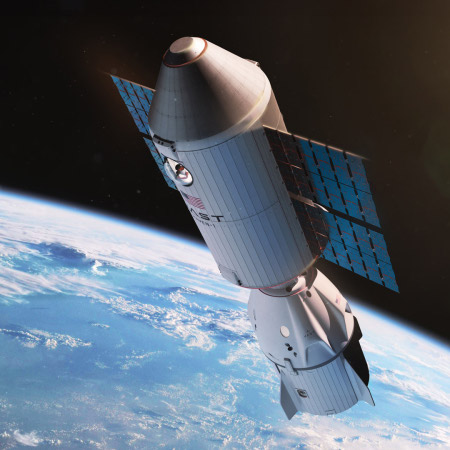
Haven-1 with docked Dragon capsule
The space station startup Vast yesterday announced that it had revised its overall schedule, delaying the launch of its Haven-1 space module from August 2025 to May 2026.
Based on their testing program this delay had become increasingly expected. They have only now begu testing of the primary structure qualification article of this module, with it passing its first pressure tests. Vibration testing is still to come. This makes the August 2025 target date impossible.
The plan now is to begin construction of the actual module as soon as this testing is complete in about a month, with the primary structure ready in July. Integration and testing will then follow to be completed by March 2026.
The launch of Haven-1 on a Falcon 9 rocket is now targeting May 2026, with its 30-day four-person crewed mission to launch no earlier than the end of June 2026.
As the company notes,
Vast was founded in 2021. At the time, NASA had already launched the CLD program and awarded funding to [three] other [space station] companies. Recognizing the need for a leapfrog strategy, we developed Haven-1 to set us apart. When NASA selects its partner(s) to carry forward its low-Earth orbit (LEO) legacy, we will be the only company operating a crewed space station—one we designed, built, tested, and verified for safety entirely in-house.
…Every lesson learned from Haven-1 will be applied to our CLD Phase II proposal—Haven-2. No team will have more operational experience than Vast. No design will carry as much flight heritage. No company will be better positioned to deliver for NASA as fast—thanks to our work and over $1 billion investment in Haven-1 ahead of CLD Phase II.
This strategy all depends of course on getting Haven-1 launched as planned. Based on the company’s operations so far, the odds appear high that it will meet this new schedule. There are no guarantees however.







